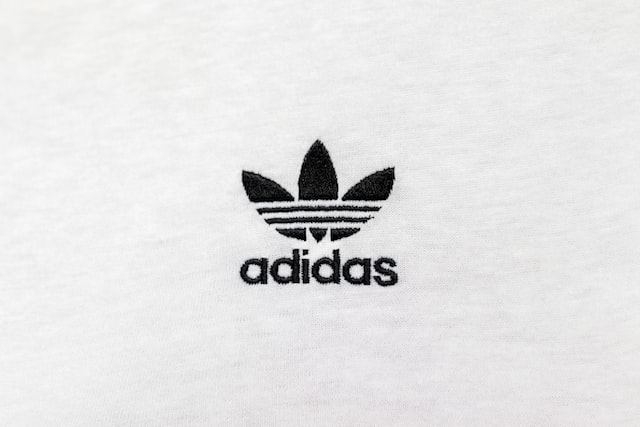Adidas is a German multinational company that was founded and is based in Herzogenaurach, Bavaria. It makes and designs shoes, accessories, and clothes.
Adidas is the largest manufacturer of sportswear in Europe and the second largest in the world, only behind Nike. It is the holding company for the Adidas Group, which includes an 8.33% investment in Bayern Munich and an Austrian fitness technology business, Runtastic.

The 2018 revenue reported by Adidas was €21.91 billion.
As a marketing tool, the company has added three stripes to the designs of its clothes and shoes.
In Finland, Karhu Sports sold the trademark to Adidas in 1952 for the equivalent of $1,600 and two whiskey bottles. Following this success, Dassler began to refer to Adidas as “The Three Stripes Firm.”
Employees’ Condition
People are the foundation of the fashion business, and brands must take concrete steps to safeguard labor. The famous manufacturer changed their process so that they can give more weight to brands that promise safe and fair working conditions than to brands that only audit their suppliers.
Since its inception, Adidas has achieved a transparency index of fashion score of sixty percent, which is acceptable but lower than its prior score of seventy percent.
The FLA Code of Conduct has approved Adidas’ entire social auditing process, up to and including the last step of production. Also, the company shows how it plans to protect COVID-19-vulnerable workers and suppliers in its supply chain.

Adidas still has a long way to go before it can be sure that the people who work in its supply chain are paid a fair wage.
A report based on foul play shows how there is a big difference between how much money is spent on sponsorships and other marketing for sports stars and how much of the final price of your sports equipment goes to the workers who made it.
But there was no proof that Adidas makes sure most of the people in its supply chain are paid enough to live on.
Complaints From Customers
Adidas promised to only use recycled polyester by 2024, and they fulfilled their promise with the next generation of their Stan Smith shoes. In an ad, they called them “50% recycled” and “100% iconic” and put a “stop plastic waste” symbol on them.
After looking into a springtime customer complaint, the Advertising Ethics Jury (“AEJ”) decided that the ad broke ARPP rules, which say that advertising statements must be true and presented in a way that doesn’t mislead.
Also, the rule says that marketers have to back up any claims about sustainability with strong evidence.
Regarding the claim “50% recycled,” the first worry was that the advertisement did not make clear to the consumer the whole percentage of the shoe that is recycled.
The jury said that this kind of claim makes it seem like this proportion applies to the whole shoe. So, the client is led to believe that half of all Adidas shoes are made from recycled materials.

In response to APRR’s letter telling Adidas about the complaint filed against the company, Adidas denied what the complainant and jury said. Overall, it was found that the advertisement met the requirements for clarity and veracity.
Also, the company never said that the product could be “recycled” at the end of its life. This makes it clear that the company’s claim that the sneakers are made of recycled materials is different from a different claim that the shoes can be recycled when they are worn out.
Impact On The Environment
Adidas’ system has been changed to achieve science-based goals and reduce carbon emissions.
The clothing giant has gotten praise for cutting greenhouse gas emissions by setting a science-based goal for its supply chain and operations. However, it is not clear if the company is on its way to reaching its goal.
Currently, science-based targets constitute the highest level for establishing greenhouse gas emissions targets.
Other brands and Adidas will have devoted a substantial amount of effort, resources, and data collection in order to demonstrate that their targets are aligned with a 2- or 1.5-degree global warming reduction strategy.
However, brands must also communicate how they expect to achieve their current tangible progress or goals.
Even though the brand does take some (limited) steps to stop deforestation by not using raw materials on the IUCN Red List of Threatened Species, it does not make its own policy public, especially when it comes to leather and other materials linked to deforestation.
It was also discovered that Adidas has policies in place to safeguard biodiversity in their supply chain, which is another important aspect of our revised methodology.

Adidas was also penalized for misrepresenting environmental claims to consumers. According to the French Jury de Déontologie Publicitaire (JDP), Adidas’ “Stan Smith Forever” advertisement violated advertising guidelines and misled consumers.
The brand’s usage of the “End Plastic Waste” badge is deceptive and fails to inform buyers of the percentage of the shoe’s materials that are recycled.
The JDP further stated that the phrase “50% recycled” misleads consumers into believing that 50% of the sneaker’s materials are recycled, which is not the case.
Consumers are ultimately confused by the message, which makes it difficult to identify what is legitimate and what is not. A blatant instance of greenwashing.
Conclusion
Despite the fact that Adidas has demonstrated improvement in terms of labor rights and sustainability, the brand is still very much a part of the fast fashion business.
Massive clothing production has terrible effects not only on the environment but also on the workers, who are often forced to work long hours for very low pay to meet production goals.
Before Adidas can be regarded as a fully ethical brand, more work needs to be done. It might begin by guaranteeing that its suppliers pay workers a living wage. This shouldn’t be an issue given the $19.8 billion in net sales predicted for 2020.

